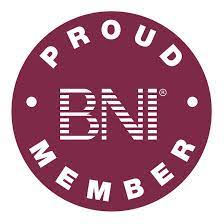In today’s fast-paced world, the ability to deliver a captivating presentation is a valuable skill that can set you apart. Whether you’re a student, a professional, or an entrepreneur, knowing how to give a good presentation can greatly enhance your communication effectiveness. This article will provide you with practical tips and techniques to master the art of delivering an engaging presentation. From structuring your content to utilizing effective visuals, we’ll explore key strategies that will help you leave a lasting impression on your audience.
I. Understanding Your Audience
A. Identifying Their Needs and Interests: Before crafting your presentation, take time to understand your audience’s needs and interests. Research their background, demographics, and prior knowledge on the topic. By tailoring your content to their specific requirements, you can ensure relevance and engagement.
B. Creating a Connection: Establishing a connection with your audience is crucial. Begin your presentation with a relatable anecdote, a thought-provoking question, or a compelling statistic. This helps to capture their attention and build rapport from the start.
II. Crafting a Compelling Structure
A. Clear Introduction: A well-crafted introduction sets the tone for your presentation. Clearly state your objective and provide a brief overview of what you’ll cover. This helps your audience understand what to expect and keeps them engaged.
B. Organized Main Points: Structure your content into clear and concise main points. Each point should support your overall message and flow logically. Utilize transitional phrases such as “firstly,” “next,” and “finally” to guide your audience smoothly through your presentation.
C. Engaging Visuals: Visual aids are powerful tools to enhance understanding and retention. Incorporate relevant images, charts, and graphs that support your key points. Keep them visually appealing, uncluttered, and easy to comprehend.
III. Effective Delivery Techniques
A. Confident Body Language: Your non-verbal cues can greatly impact your presentation’s effectiveness. Maintain good posture, make eye contact, and use gestures purposefully. These actions convey confidence and help establish a connection with your audience.
B. Dynamic Vocal Delivery: Vary your voice tone, pitch, and pace to add emphasis and maintain audience engagement. Speak clearly and project your voice to ensure everyone can hear you. Practice and rehearse to refine your vocal delivery.
C. Audience Interaction: Encourage audience participation through questions, brief activities, or discussions. This involvement creates a dynamic and interactive atmosphere, fostering engagement and interest.
IV. Compelling Conclusion and Call-to-Action
A. Summarize Key Points: In your conclusion, briefly summarize your main points to reinforce your message and ensure clarity. This helps your audience remember the essential takeaways from your presentation.
B. Leave a Lasting Impression: End your presentation on a high note by delivering a memorable closing statement, sharing a powerful quote, or telling a compelling story. This leaves a lasting impression and reinforces your key message.
C. Call-to-Action: Provide a clear call-to-action that aligns with your presentation’s purpose. Encourage your audience to take specific steps, such as visiting a website, signing up for a newsletter, or implementing your recommendations.
Delivering a good presentation is a skill that can be honed through practice and thoughtful preparation. By understanding your audience, crafting a compelling structure, utilizing effective delivery techniques, and ending with a strong conclusion, you can leave a lasting impact. Remember, engaging presentations are about connecting with your audience, delivering valuable content, and inspiring action. With these tips in mind, you’re well on your way to becoming a confident and successful presenter.










